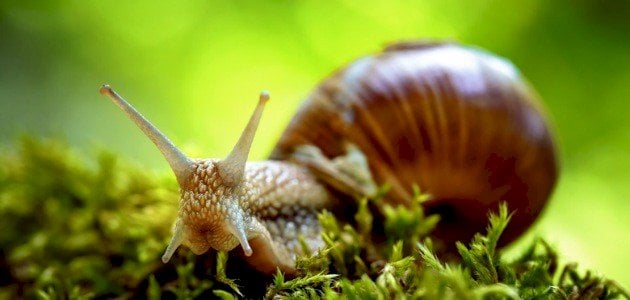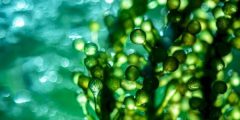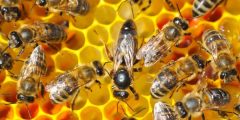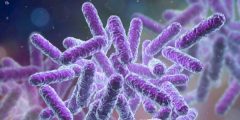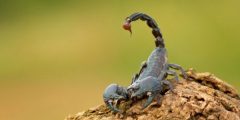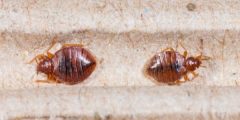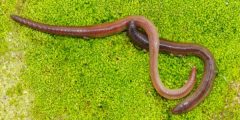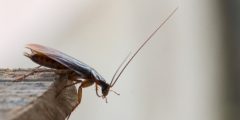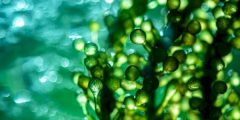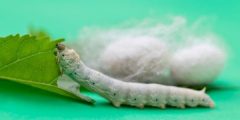Definition of mollusks
Mollusks are a group of organisms that all consist of soft bodies, usually consisting of a head and a foot, and their bodies are often covered by a hard exoskeleton, such as snails and oysters.
Molluscs are one of the most diverse groups of animals in the world, and the number of their species is no less than 50,000 and may reach 200,000 species. It was also believed that they became extinct millions of years ago until one of them was found in 1952 AD in the depths of the ocean on the coast of Costa Rica.
Molluscs are basically aquatic creatures, most of which live in salt water, with a few in fresh water and on land. They can also be found as parasites hidden inside other animals.
General characteristics
The basic characteristics of mollusk species in the world:
- Size
The giant squid is considered the largest invertebrate in size, with a body length of eight meters, and with its arms extended, its total length reaches 22 metres. On the other hand, there are also tiny bodies, with a length of less than one millimeter, such as gastropods.
- Places to live
Slugs have adapted to all environments except the air, that is, there are no flying slugs, and thousands of species live entirely on land. Rock and sand slugs have been found, and slugs have been found that burrow in the ground and crawl, and some have the ability to swim freely.
Read also:Research on fungi
- Galore
Molluscs are found all over the world, and it has been found that the close relationship of many mollusk groups to their food source, whether by direct dependence on certain food sources, or through participation in food chains, limits their geographical distribution, and in general, mollusk species are available in small numbers. In cold water areas.
Morphological characteristics of molluscs
The size of mollusks varies depending on the species, as they range in size from very small creatures that do not exceed one millimeter, as is the case in small snails, to huge creatures, as in giant squids and oysters. The most important formal characteristics of mollusks are the following:
- body shape
Mollusks have a smooth, undivided body except in Monoplacora, mostly protected by an exoskeleton and with a calcareous shell.
- Head
Molluscs have a distinctive head that includes a mouth, eyes, tentacles, and other sensory organs, and contains tentacles.
- the scarf
The most famous feature of molluscs is the dorsal skin, which is called the mantle or diaphragm, and the cavity it contains. The mantle covers the mollusk’s body and gives it the ability to move and capture food.
Read also:Why is it called the praying mantis?- foot
Molluscs have a distinctive foot that can be modified for use in both swimming, crawling, and burrowing, and is a hidden, slender, forward-extended organ.
- Viscous liquid
Molluscs - many gastropods - can secrete a sticky liquid with which they defend themselves against predators. Some types of molluscs also secrete harmful chemicals, such as toxins from salivary glands, or unpleasant acids from mantle cells. Some of them secrete specific liquids to scare off predators or For camouflage or to inhibit the predator's sense of smell.
Internal structure of molluscs
Inside, the bodies of mollusks contain various vital systems, including a digestive and respiratory system, a circulatory system that contains a heart, and others. The internal structure of mollusks can be detailed as follows:
Muscles and tissues
The body of molluscs contains a group of dorsal-abdominal muscles that connect the parts of the body to each other, and helps it move and roll. Its body is characterized by being mollusk, completely filled with tissues and fluids in all its cavities.
Nervous system
Molluscs have an apparatus that contains a pair of cerebral ganglia (masses of nerve cell bodies), a pair of lateral nerve cords emerging from the dorsal cerebral ganglia, and a ventral pair of nerve cords, both connected to each other by lateral branches of nerve fibres.
Read also:Information about silkwormsDigestive
Molluscs have a simple digestive system, with a mouth in front and an anus in the back, except in gastropods, which have a U-shaped intestine, and thus the anus is in the front. This means that the primitive digestive system of molluscs is straight, and contains a stomach and digestive glands. And skinny intestines.
Circulatory system
Molluscs have an open circulatory system devoid of epithelial walls through which bodily fluid is transported within the sinuses. The heart usually consists of two ventricles and two rear ears. Molluscs have many gills. Some species that live on land have developed lungs, so breathing occurs directly through the gills, the lung, or both. together.
Reproductive system
Molluscs are usually classified into males and females, but some species are “hermaphrodites.” Fertilization in mollusks occurs either externally or internally, and the eggs or sperm are emptied into the pericardial cavity. It is a thin-walled sac present in its structure, and then the pericardial openings transport it to the environment for fertilization to occur externally.
In more advanced molluscs, there are usually separate channels for transporting gametes (gametes) called oviducts, one for the female gamete and another for the male, each of which leads the egg and sperm, depending on the type of channel, directly into the cavity.
Mollusk food
Slugs can feed on plants or meat; For example, certain types of mollusks feed, such as; Cephalopods and gastropods are known to be voracious eaters of meat, eating crabs, lobsters, small types of molluscs, oysters, crustaceans, shrimp, and small fish such as sardines.
There are some types of molluscs, such as small squid, that feed on plankton, just like bivalve mollusks that also feed mainly on phytoplankton and algae, and others that feed on various plants.
Mollusc behavior
The nervous systems of molluscs differ greatly from those of vertebrate animals, such as fish, birds, and mammals, in that they consist of groups of nerve cells called ganglia rather than true brains.
The brains of the most advanced molluscs, such as cephalopods and gastropods, are wrapped around the esophagus instead of being inside solid skulls. What is strange is that most of the neurons of an octopus, for example, are not located in its brains, but rather in its arms, which is what makes it work independently even when separated from its body.
Types of molluscs
Molluscs are usually divided into ten classes (of which two are extinct), and the main classes of living molluscs include gastropods, bivalves, and cephalopods. The following are the most prominent types of molluscs:
- Gastropods
One of the most diverse species of molluscs, it lives in salt and fresh water and land, and includes snails and snails.
- Bivalves
They are edible seashells, known for their shells and lack of a head. They live in salt and fresh water, and include oysters, oysters, and mussels.
- Cephalopods
Most of these species lack shells, and include octopus and squid.
- Canine shells
Which have long cylindrical shells and tentacles.
- monoplate
It is found in the depths of the sea, and has shells that resemble a cover. It was thought to be extinct, but scientists found some living species in 1952 AD.
- Many shells
They are flat, slug-like molluscs with calcareous plates covering the upper surfaces of their bodies. They live in tidal waters along rocky coasts in various parts of the world.
- Neominimorpha
They are worm-like molluscs that lack shells. They live in the ocean, are mostly blind, and are either flattened or cylindrical in shape.
- Codofoviata
They are small mollusks that live in the depths of the sea and hide in soft bottom sediments. They resemble worms and do not have shells and muscular feet like other mollusks. Their bodies are covered in scale-like calcareous spicules.
Mollusk life cycle
Molluscs have a life cycle characterized by a set of distinctive features related to fertilization, egg hatching, and growth. Their life cycle includes:
- fertilization
The eggs are often fertilized inside the female's body by the male, and the female places the fertilized eggs in a safe place and guards them. In some species, fertilization is external, as the female releases the eggs into the water, and the male releases sperm directly to cause the fertilization process to occur, as happens in the process of oyster reproduction, for example.
- The eggs hatched
Different numbers of eggs are laid depending on the type of mollusk, and the eggs hatch after a period of two to four weeks that also varies depending on the type, and then small larvae appear.
- the growth
The larvae often grow within several weeks to become adults capable of mating and repeating the cycle again, but there are some species of molluscs that do not reach sexual maturity until after a few years.
